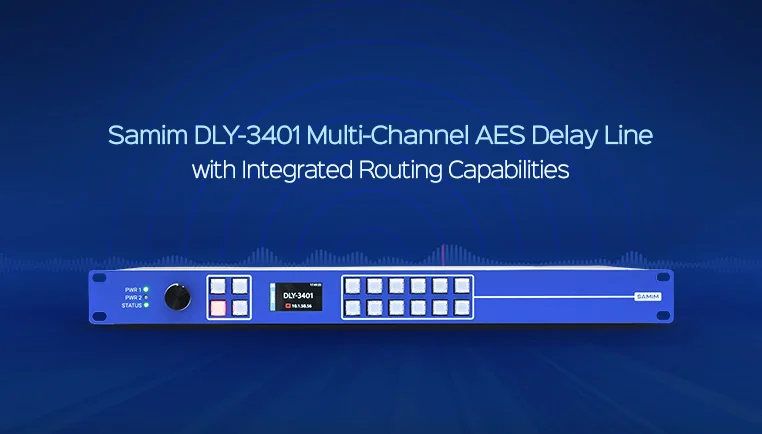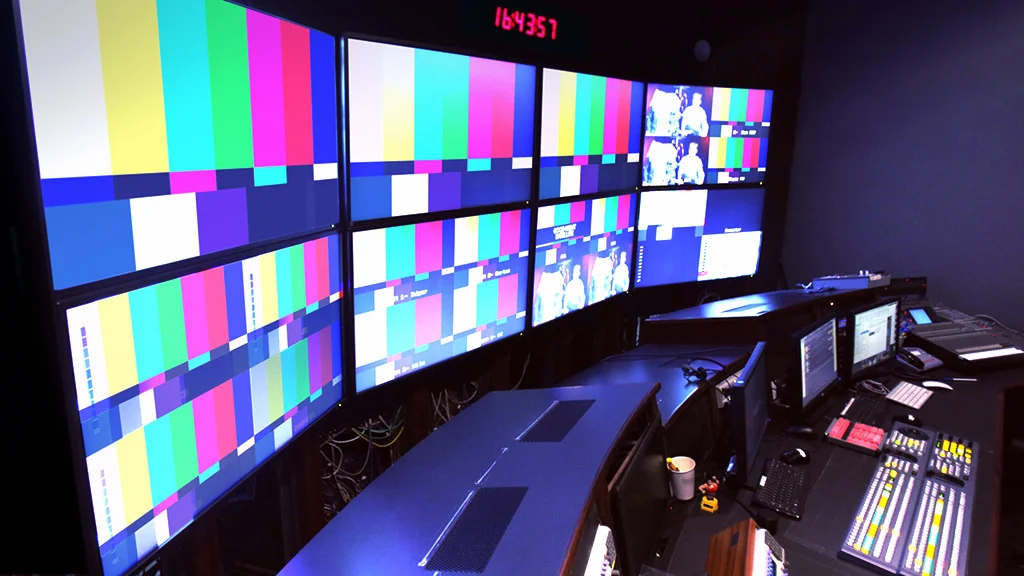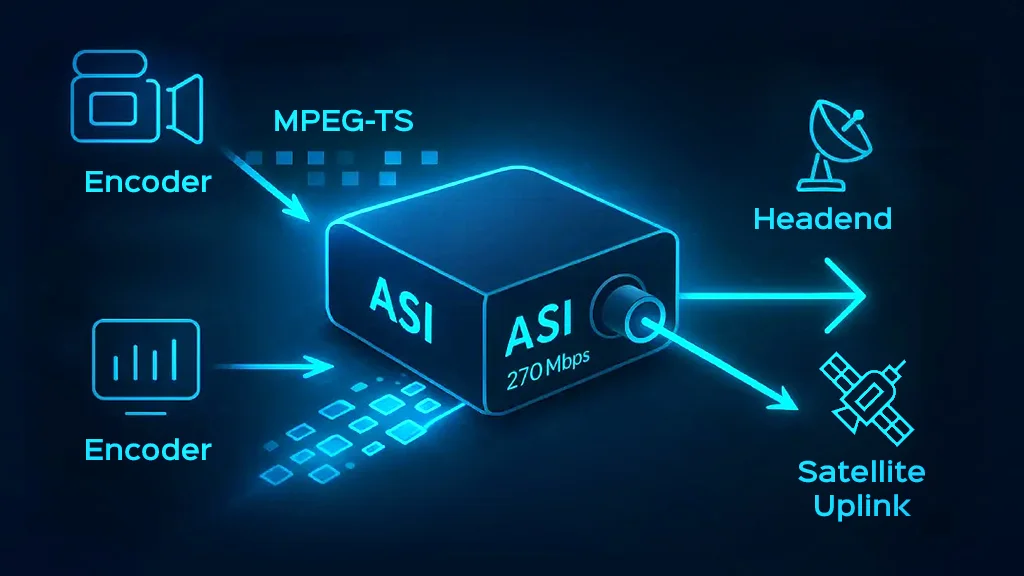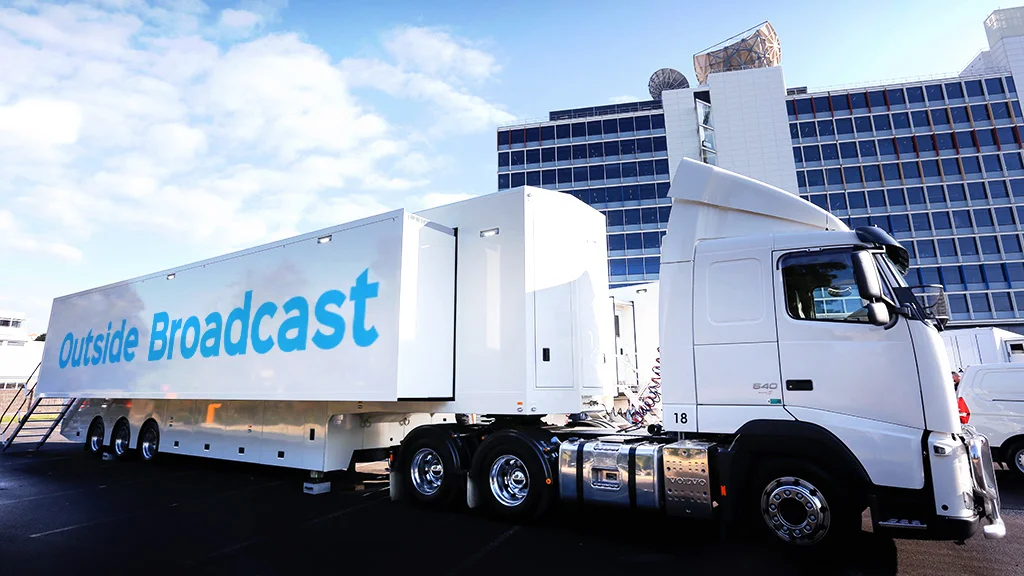
- Article
Engineering Broadcast Delay Systems for Live Radio: Technical Standards and Smart Integration
In the field of live radio broadcasting, audio delay and radio broadcast delay systems play a critical role in content control, quality assurance, and safety. These systems are especially important to prevent the unintended airing of inappropriate content, profanity, or technical errors.
This research explores technical standards, innovative technologies, and modern approaches to designing and implementing broadcast delay systems. It also examines smart integrations, including Samim’s DLY-3401, for effectively managing delays within radio workflows. The ultimate goal is to provide reliable, and customizable solutions that ensure safe and high-quality live broadcasts.
Profanity Delay in Radio broadcasting
Profanity delay is a specialized form of live radio delay, designed to prevent offensive language from reaching the audience in real time. In live radio broadcasts, hosts or guests may inadvertently or intentionally use inappropriate words, which could result in regulatory sanctions or harm to the broadcaster’s reputation. Traditional radio broadcast delay systems, including FM radio delay, rely on real-time monitoring by trained operators who manually cut or bleep out offensive contents.
Recent technological advances have introduced automated detection methods using AI-driven speech recognition and keyword filtering algorithms. These audio delay systems must operate with minimum latency to ensure real-time accuracy, especially during live call-ins, interviews, or unscripted segments. Incorporating effective profanity delay within the broader live radio delay framework helps protect broadcasters while preserving the natural flow of live programming.

Where Audio Delay Fits in the Radio Signal Chain
The radio signal chain consists of multiple stages, from the initial audio source production to the final transmission, whether on FM radio or other broadcasting platforms. The placement of the delay system is crucial for achieving optimal performance. Typically, audio delay is inserted after the initial audio processing stage and before the transmission encoder, which enables effective management of live radio delay and helps relieve issues like radio broadcast latency.
This positioning allows broadcasters to monitor, review, and intervene in real-time, with the delay buffer holding a fixed duration of audio (ranging from a few seconds to several minutes). Such a radio broadcast delay acts as a safeguard, providing a critical window to catch and remove inappropriate content before it reaches the audience. When setting up your delay system, it’s important to consider factors like minimizing radio broadcast latency, syncing with automation tools such as mixers, and ensuring smooth live interactions, including phone-ins and remote guests.

Technical Requirements for a Modern Broadcast Delay System
Modern broadcast delay systems must adhere to a set of technical standards ensuring reliability, flexibility, and ease of integration:
Low Latency Processing: The system must operate with minimal delay (usually around 1 to 3 seconds) to allow timely review and intervention during live broadcasts.
Format Compatibility: It should support various audio formats and sample rates, ensuring smooth integration with existing equipment and standards.
Integration with Automation: Seamless connection with broadcast automation systems through standard protocols helps streamline operations and control.
Adjustable Buffer Duration: Operators should easily modify the delay time, from a few seconds up to minutes, based on the type of content or situation.
Reliability and Redundancy: Redundant hardware, power, and network connections ensure the system stays operational without interruption.
Audio Quality: High-quality sound processing maintains clarity and integrity of the audio signal throughout the delay.
User-Friendly Interface: A simple, and clear dashboard enables operators to monitor, manage, and respond quickly during live broadcasts.
Industry Standards Compliance: Adherence to international broadcast standards and security protocols guarantees reliable, compliant, and secure operation.

Samim’s Solution for Delay Management in Radio Workflows
Samim’s DLY-3401 is an advanced solution designed to optimize delay management in radio workflows. Seamlessly integrating into existing radio chains, it gives broadcasters enhanced control over live radio delay, helping to manage radio broadcast latency, ensure content compliance, streamline operational workflows, and maintain high broadcast quality. Its flexible design and sophisticated features make it a valuable tool for modern radio stations seeking to improve safety, efficiency, and content integrity during live transmissions.
Compact and User-Friendly Design: Designed with a 1RU rack-mountable form factor and an intuitive front panel control, DLY-3401 provides versatile broadcast audio delay capabilities across multiple inputs. With an initial 4-channel AES input configuration, upgradeable to 8 channels, this system enables broadcasters to manage complex audio routing with ease.
Precise and Extensive Delay Control: The device features independent delay control for each AES input, offering precise adjustment ranging from 1 millisecond up to an impressive 170 seconds (170,000 milliseconds), accommodating even the most intricate timing requirements.
Internal Playback and Management: The internal playback feature enables quick and effortless playlist management, providing flexibility to upload and control audio clips directly via a web-based UI. Coupled with 2GB internal memory, this functionality ensures continuous playback without interruption.
Seamless Audio Routing and Smooth Transitions: The built-in internal sound router with v-fade transition guarantees smooth audio switching, eliminating abrupt changes and maintaining broadcast quality.
Operational Efficiency with Salvo Functionality: Additional features such as the Salvo operation facilitate instant preset recall and output mapping with dedicated key controls, making operational workflows more efficient.
Safety and Reliability Features: Safety is crucial, and the relay protection on AES outputs ensures system integrity and fault prevention.
High-Quality Raw Data Delay Capabilities: DLY-3401 supports raw data delay creation without quality degradation, enabling broadcasters to achieve perfect audio synchronization.
Easy Management and Monitoring: The web interface simplifies configuration and remote management, while optional sound monitoring modules and redundant power supplies enhance system reliability and oversight.
Samim’s DLY-3401 effectively streamlines delay management in radio workflows. Its precision, flexibility, and reliability make it an ideal choice for radio stations aiming to optimize broadcast delay, reduce latency, and ensure high-quality, safe live transmissions.









